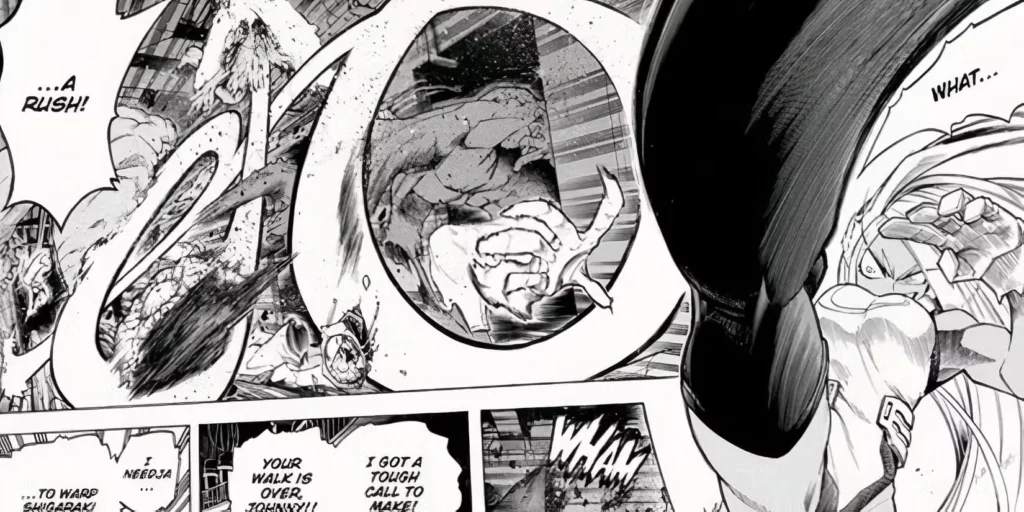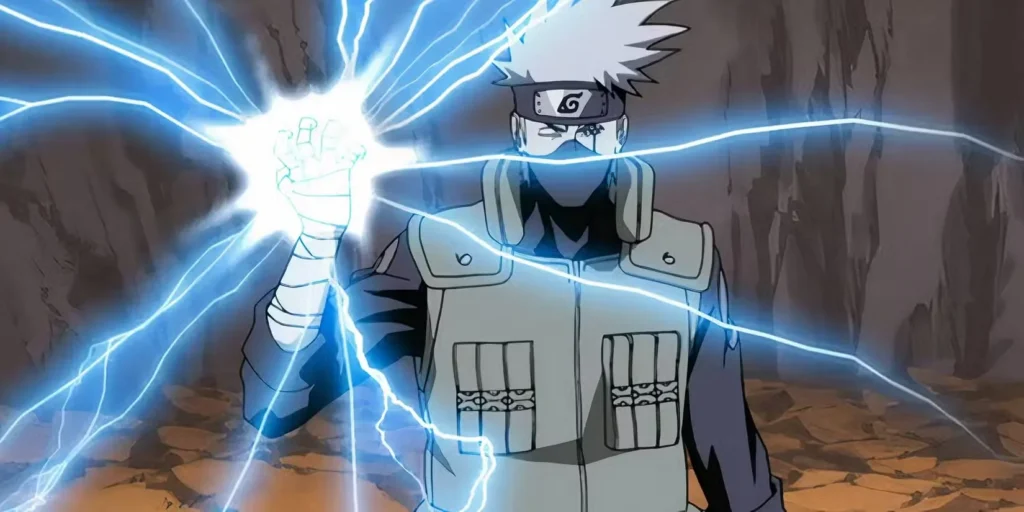This piece has some light spoilers for early arcs in My Hero Academia and Naruto—so if you’re still catching up, consider this your heads-up.
When you think of Naruto and My Hero Academia (MHA) side by side, they don’t exactly scream “twins.” Naruto takes us into a ninja world packed with Jutsu, clans, and hidden villages, while MHA is all about superheroes holding it down against villains in modern Japan. Different vibes, different settings… yet both dominate the shonen scene.
So why do some fans (and even the creators themselves) see Naruto’s fingerprints all over MHA? Well, it turns out Kohei Horikoshi—MHA’s creator—grew up a Naruto fanboy. And while he didn’t borrow character designs or settings, the influence runs deeper… right into the way he tells the story on the page.

Naruto’s Panel Style Left a Big Impact
In a chat between Horikoshi and Masashi Kishimoto (the mastermind behind Naruto), Horikoshi admitted something interesting: his biggest inspiration wasn’t characters or powers, but paneling.
Paneling = how manga guides your eye across the page. It’s how creators shift between dramatic wide shots and intimate close-ups, almost like a movie director controlling the camera lens.
Kishimoto himself even said he noticed this right away—Horikoshi was clearly using similar techniques to keep action flowing and emotions front and center. The back-and-forth of wide to close panels? That’s straight out of Naruto’s playbook.

Spotting Naruto’s Influence in Early My Hero Academia
If you crack open early MHA volumes, you’ll definitely see it. Horikoshi even admitted that during the Battle Trial Arc—yep, Deku vs. Bakugo in that tunnel scene—he was constantly flipping back to Naruto for reference.
For example:
- Bakugo corners Deku in a claustrophobic tunnel, almost blasting him apart with his Explosion Quirk.
- Horikoshi sets the stage with wide shots of the environment, then zooms into Deku’s expressions and Bakugo’s explosive movements.
Sound familiar? That’s because it mirrors Naruto Volume 17, where Jiraiya traps Itachi and Kisame in a tunnel-like structure. Kishimoto uses the same “zoom in, zoom out” rhythm to balance emotion with environment.
This kind of layout makes fight scenes way easier for readers to follow—while still hitting with maximum hype. And honestly? It’s probably one of the reasons MHA battles feel so cinematic when you read them.
Aizawa and Kakashi: Unintentional Connections
Here’s where things get funny: Horikoshi also admitted that sometimes he picked up on Naruto influences without even realizing it.
Take Eraser Head (Shota Aizawa). His Quirk lets him shut down opponents’ abilities just by staring at them. Ring any bells? Yep—that’s a little too close to Kakashi’s Sharingan, which can pull off crazy Jutsu thanks to eye power.
Horikoshi confessed he didn’t even notice the similarity—it just slipped in because Naruto was such a huge part of his childhood. Basically, Kakashi was baked into his manga DNA.
The best part? Kishimoto laughed about it, because he did the same thing. He admitted Naruto’s “grow up from kid → teenager → adult with kids” arc really mirrors Goku’s journey in Dragon Ball. Not because he set out to copy it, but because Dragon Ball was so big in his life that the influence was inevitable.

Why This Makes MHA Feel Familiar (But Still Fresh)
What’s cool about this? It shows that influence doesn’t equal copy-paste. Horikoshi definitely learned from Naruto, especially with panel work and character archetypes, but MHA has its own energy that sets it apart.
- Naruto fights feel like classic ninja strategy battles.
- MHA fights feel more like superhero blockbusters, exploding with quirks and big emotions.
Even if the DNA is similar in spots, Horikoshi’s manga has its own style—and honestly, that blending of inspiration + originality is why it’s one of the biggest shonen hits of this generation.
Thoughts
If you’ve ever read MHA and thought, “Hmm, this kinda feels like Naruto,” your instincts weren’t wrong. From panel transitions to mentor characters with eye-based powers, Naruto’s influence runs quietly through the series. But rather than a copy, it’s more like a tip-of-the-hat from one fan-turned-creator to the manga that inspired him.
In short: Naruto walked, so Deku could run (and trip over his own feet—but that’s Deku for you).
FAQs
Yes. Kohei Horikoshi, the creator of MHA, has openly admitted that Naruto influenced his paneling style, storytelling approach, and even some character design decisions—though often unconsciously.
Not directly, but the similarities are striking. Both teachers rely on eye-based powers to overwhelm opponents, and Horikoshi later admitted the resemblance was probably subconscious due to his love of Naruto growing up.
Paneling refers to how manga panels guide your eye across the page. Horikoshi borrowed Kishimoto’s style of switching between wide shots and close-ups to make MHA battles cinematic and easy to follow.
Besides Naruto, Horikoshi has cited influences from Dragon Ball, Marvel superheroes, and classic shonen tropes. His blend of Western comic pacing with shonen storytelling gives MHA its unique style.
More News:
- Metal Gear Solid Delta: Snake Eater Could Be Yours for $1 (No, Seriously)
- Fallout Season 2 Brings Fans Back to New Vegas… But There’s a Weird Dinky the Dinosaur Retcon
- Sorry RE5 Fans: Capcom Isn’t Remaking Resident Evil 5 (At Least, Not Yet)
- Hollow Knight: Silksong’s Gamescom Demo? Yeah… It’s Actually from 2019